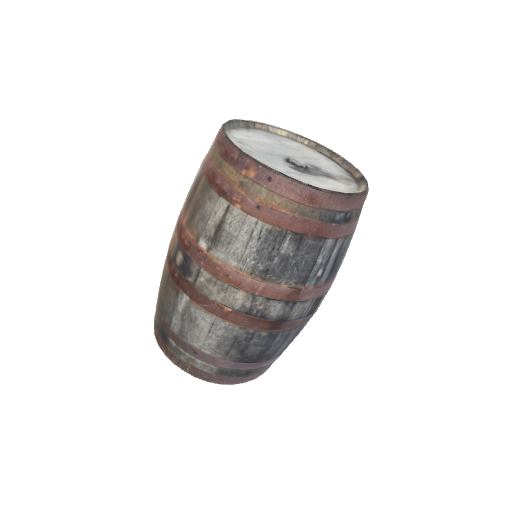Barrels
Varying in size, barrels are used to transport a wide range of materials aboard a ship, such as clay, building materials (nails, ironwork, etc.), salt to preserve cod, as well as food and provisions for the duration of expeditions. Barrels are made of vertical pieces of wood called staves, placed in a circle, and held together on the outside by metal hoops. Both ends are flat and called heads.
Many barrels are used by whalers to store and transport the whale oil and salt cod they bring back home. Barricas are oak barrels with a capacity of 195 to 240 litres. They are brought onto the ships in parts and are assembled, repaired, and maintained on board by the coopers. These craftsmen are important members of the crew. They carry their own tools and possess highly technical and complex craftsmanship. To make their work easier, barrel parts are often marked to indicate the order of assembly.
References
Date: Replica of a 16th-century object
Origin: North America
Owner: Canadian Museum of History.
Sources:
Tonnelier [Cooper]. (1765). In J. L. R. D’Alembert, & D. Diderot (Eds.), L’Encyclopédie ou Dictionnaire raisonnée des sciences, des arts et des métiers (vol. 16, p. 411a–412a). http://enccre.academie-sciences.fr/encyclopedie/planche/v31-x6
Herzog, A. (n.d.). L’âge d’or des chasseurs de baleines basques en Amérique (deuxième moitié du XVIe siècle). [The golden age of the Basque whalers in America (second half of the 16th century)] ARCHÉOLAB.QUÉBEC. Retrieved August 22, 2022, from https://www.archeolab.quebec/familles-d-objets/basques-en-amerique-du-nord
Canadian Museum of History. (n.d.) A Whaling Station. Canada Hall. Retrieved from https://www.museedelhistoire.ca/cmc/exhibitions/hist/canp1/ca04bfra.html
